The first attraction we went was the Qushui Garden. This is one of the five famous gardens in Shanghai. We have already gone to three gardens before this one, they were Qiu Xia garden, GuYi Garden and Zui Bai Chi Pond. So this is the fourth garden that we have covered.
Entrance fee to this garden is RMB5 per adult and children are free.
The garden is at the east end of Garden Road of Qingpu Town and was formerly the attached garden of Town God Temple. It was built in the 10th year of Qianlong Reign of Qing Dynasty (1745).

Directly after the main entrance, there is another stone entrance that we have to pass through before getting into the main inner part of the garden.

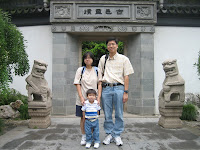
There were quite some unique stone carvings on this stone entrance as seen in the close up photos that I have captured.



Constructed in 1745, the 10th year of Qianlong’s reign (1736-1795) during the Qing Dynasty (1644-1911), QuShui garden was originally an attached garden to the nearby Town God Temple. In the old days, people believed that the town wasprotected by Chenghuang, or the “Town God,” who exterminated evils in towns and helped people live a prosperous and happy life. Chenghuang is a god in Daoism, but monarchs of different faiths in history have all placed great importance on him.
At that time, people came to the temple and paid their respect for the protector by kowtowing and offering sacrifices. It is said that each person in the town had donated one wen (monetary units during the Qing Dynasty) to the temple in order to help create a temple garden for all to enjoy. The garden was known as “One Wen Garden” from then on.
The old name of this garden "一文园" can still be found in the other side of the stone entrance.
At that time, people came to the temple and paid their respect for the protector by kowtowing and offering sacrifices. It is said that each person in the town had donated one wen (monetary units during the Qing Dynasty) to the temple in order to help create a temple garden for all to enjoy. The garden was known as “One Wen Garden” from then on.
The old name of this garden "一文园" can still be found in the other side of the stone entrance.
With its white exterior walls and black tiled eaves, the garden is easily recognizable from a distance. Upon entering its walls, one’s mood mellows into peace and harmony in part to the ambiance of the towering ancient trees which stand regally on both sides of a pathway leading visitors to the elegance inside.




With abundant water as the garden’s distinguishing characteristic, its name was later changed to “Qushui,” literally meaning zigzagging channel in Chinese, during the third year of Jiaqing’s reign (1796-1820). Qushui Garden still preserves its original semblance, even through the various wars it has survived over the years. At the garden, a white-washed wall shuts out the clatter of modern Shanghai. Ponds and lush greenery create a private world in the garden, transporting visitors to a timeless serenity.
The 18,200-square-meter garden was built in a classic South China style. Unlike the natural aesthetics favored by Western gardens, Chinese gardener’s art demands the taming of nature as water, foliage and rocks are molded into artificial landscapes. The scenery mimics rivers and mountains on a grand scale.
The 18,200-square-meter garden was built in a classic South China style. Unlike the natural aesthetics favored by Western gardens, Chinese gardener’s art demands the taming of nature as water, foliage and rocks are molded into artificial landscapes. The scenery mimics rivers and mountains on a grand scale.
The garden provides an abundance of scenes within its limited space. Visitors to the garden must be patient. The scene shifts as you walk along. To avoid the impression of monotony and repetition, the designers erected walls pierced with lattice windows that divide the garden into several sections without obstructing a view of the entire complex.
Several architectures in the garden reflect the Chinese philosophy of Daoism. A prime example is the Lotus Lake which is surrounded by three pavilions. Using different styles and decoration patterns, the pavilions are designed to symbolize a picture of prosperous scenes in heaven, earth, and the human world, in perspective of Daoism philosophy.
Other scenes include eight brick carvings along the lakeshore, reflecting the eight immortals from Daoist mythology. It is said each represents a different aspect of Daoist perfection, including youth, old age, poverty, wealth, populace, nobility, the masculine and the feminine. As told in many famous Daoism legends, they embarked on many incredible adventures and quests to destroy evil.
Visitors to the scene are suggested to take a seat and a cup of tea. Their eyes treated to chambers, pavilions and terraces lining the lake along with an artificial hill that seems natural and irregular. Towering to the sky are 54 old trees over 100 years old. They include pine, osmanthus and ginkgo trees.
When the autumn breeze is gentle, the fragrance of sweet scented osmanthus is everywhere, making the air taste sweet.
More sceneries from the garden



































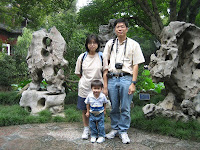





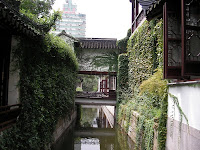















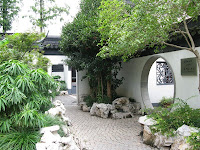













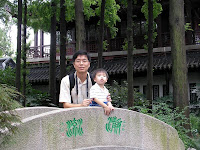
















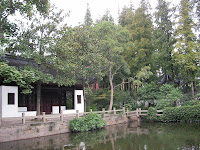


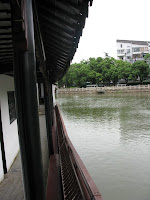



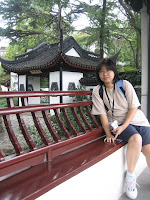






















No comments:
Post a Comment